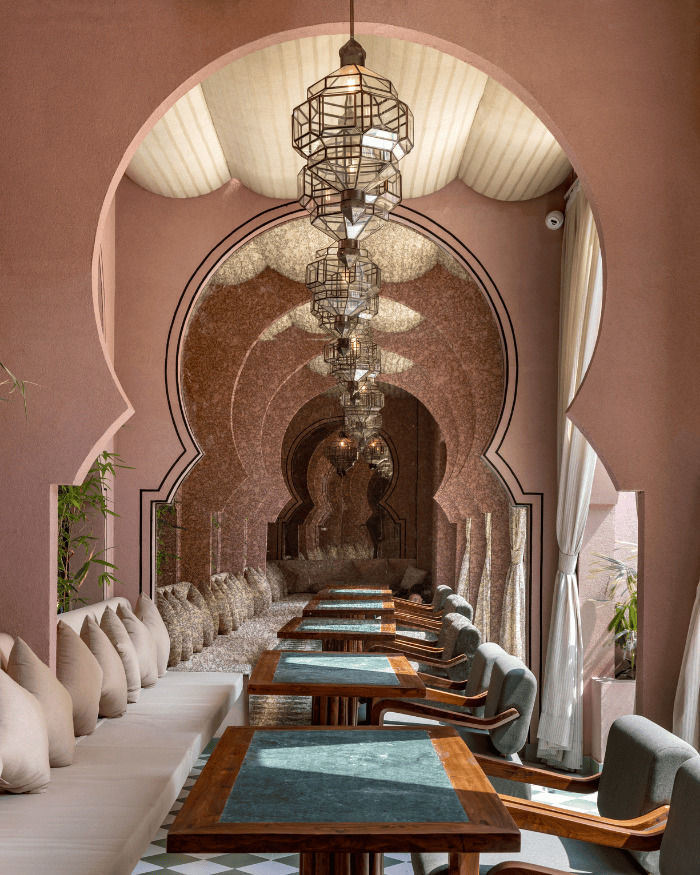Tugging at the filaments of heritage, clothmakers from our subcontinent are poised for a paradigm shift. Mumbai’s National Gallery of Modern Art (NGMA) is levelling the field of play over the next month as a multidisciplinary exhibition titled Sutr Santati: Then. Now. Next braids together more than 125 textile practices in an immutable warp and weft ballad.
Owing to the munificence of Abheraj Baldota Foundation, nearly 200 couturiers and local weaving clusters from across the hinterland wage sweet battle against the juggernaut of mass-produced consumerism.
“After a fantastic response in New Delhi and Melbourne,” asserts curator Lavina Baldota, “we have expanded the repertoire vis-à-vis materiality, techniques and practitioners.” The third iteration of Sutr Santati remains publicly accessible for fashion school students and anyone else eager to witness homegrown craftsmanship until the end of January 2024.


Suturing our post-colonial tatters into a patchwork quilt of self determination, the raison d’être behind the expo last year was to commemorate the 150th birth anniversary of Mahatma Gandhi and keep his spinning wheel of Swadeshi economy in unfettered motion.


This time around, the spotlight is on repurposing centuries-old expressions like natural dye Chintz, Pichwai or Jamdani with a selvedge of contemporary aesthetics.
Culled from region-specific fibres as multifarious as lotus stems, camel wool and yak hair, the creations on display are testament to the inexhaustible shapeshifting that Indian fabric undergoes from a Mata ni Pachedi shawl and Pattachitra narrative scrolls to stretched Kalamkari canvases hung in modern homes.


The first two floors at NGMA presents a unique opportunity to peruse traditional workmanship like Kodalikaruppur patterning which harmonises block prints and wax resist hand painting, baavanbuti sarees from Bihar and the kasavu mundu worn in Kerala known for its opulent gold zari border.
Indigenous embroidery like pukhoor from Tamil Nadu and signature handloom offerings such as Sambalpuri ikat from Odisha on the third floor remind us why we must appreciate the value chain that goes on behind the scenes. Level 4 explores khadi in connection with the freedom struggle while the dome at the apex of the museum encapsulates hero pieces and experimental silhouettes by Anamika Khanna, Vaishali Shadangule inter alia.


Although returning contributors like Atelier Ashiesh Shah (in collaboration with Jaipur Rugs), designer Gaurav Gupta, sustainable labels like Good Earth and Raw Mango will reinvigorate the tactile vocabulary; this year’s roster also welcomes new visionaries in the league of Himanshu Shani, Rahul Mishra and Renuka Reddy among others.
Then there are the revivalists like Asif Sheikh, Waseem Ahmed and Rahul Jain, the art historian behind experimental silk workshop ASHA. Finally the Baldota Group has also synergised with local NGOs and collectives like Kulvi WHIMS, Chanakya School of Craft, Nila House, Princess Diya Kumari Foundation and Vastrakala.


Unspooling the circular ecosystem of dyers, printers and loom operators, Sutr Santati highlights how labour-intensive the cottage industry textiles have been — justifying their rightful place in the sphere of artisanal luxury.
Whether it be a hand knotted Nakshatra rug inspired by starry skies or the gridlike geometry of resist-dyed Telia Rumal, countless generations of knowledge keeping and refinement can be traced in the interstices of even the most commonplace scrap of cloth. In essence, Lavina Baldota hopes that her exhibition shall serve as a ligature that binds the past and future in a seamless, uncompromising odyssey of material evolution.
You may also like: Get Set Cook: Carysil collaborates with the cast of Fabulous Lives of Bollywood Wives for an exhibition in Mumbai


















